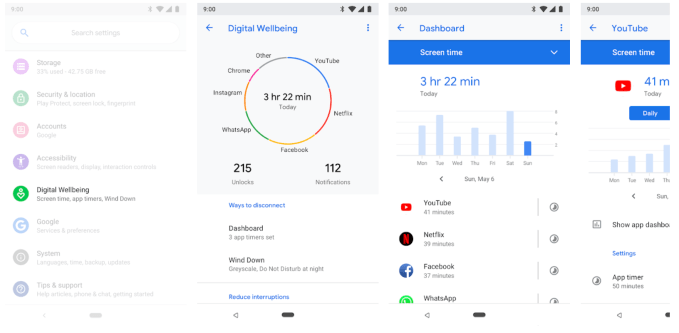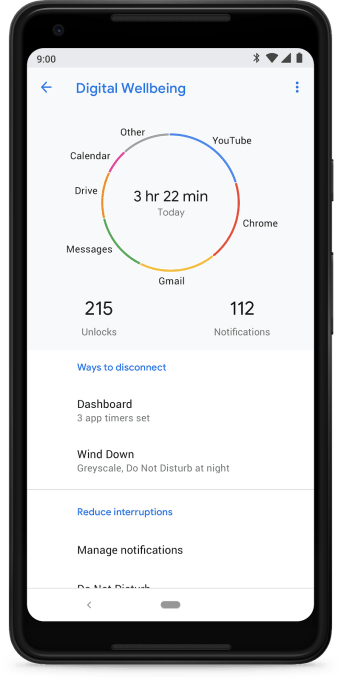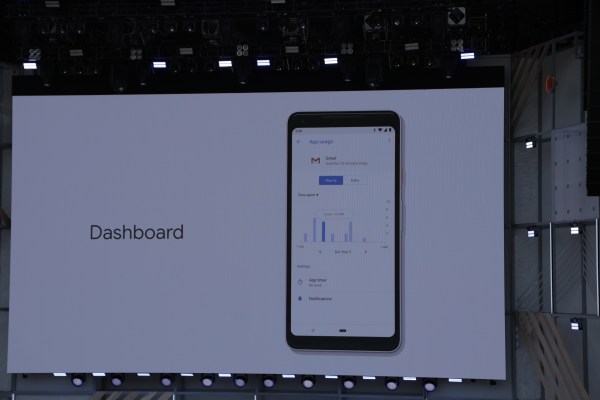Google’s latest effort to help users monitor and control their screen time, Digital Wellbeing, is making its way to more devices. Initially available exclusively to Pixel and Android One device owners, Digital Wellbeing’s feature set is now rolling out to Nokia 6 and Nokia 8 devices with Android Pie, as well as on the new Samsung Galaxy S10.
The site NokiaPowerUser was first to spot the addition to Nokia devices, which was picked up by XDA Developers and noted on their blog. XDA also noticed Digital Wellbeing was available in the Samsung Galaxy S10‘s device settings, which makes it the first non-Pixel or non-Android One phone to ship with Digital Wellbeing installed.
Digital Wellbeing, by way of background, is basically Google’s version of Apple’s Screen Time, and one of the key ways the company is addressing consumer concerns over device addiction.

This has been a hot topic in the tech industry in recent months, as people have become more aware of unhealthy behaviors with regard to use of smartphones and their apps. In fact, a number of those involved with mobile apps’ creation have since come out to say that they were complicit in building apps that exploited weaknesses in the human psyche for the sole purpose of addicting users.
One former Google exec, Tristan Harris, kicked off a movement focused on this problem. He also created the Center for Humane Technology, which encourages the implementation of new design principles that help put users back in control of their technology.
In the meantime, companies are rolling out features to give us control over our behaviors around existing technology.
 For example, Facebook last year changed how its News Feed operates to reduce time spent on its site in favor of well-being. And Facebook-owned Instagram introduced a time well spent feature, by informing users “you’re all caught up” instead of offering an endless scroll. YouTube lets you schedule reminders to take a break.
For example, Facebook last year changed how its News Feed operates to reduce time spent on its site in favor of well-being. And Facebook-owned Instagram introduced a time well spent feature, by informing users “you’re all caught up” instead of offering an endless scroll. YouTube lets you schedule reminders to take a break.
We also have OS-level features like Apple’s Screen Time and Google’s Digital Wellbeing for more comprehensive control and monitoring.
Specifically, Digital Wellbeing allows you to track your device addiction in several ways, including how often you check your phone, how many notifications you receive, how often you use apps and more, and allows you to set limits on usage, and configure settings like a nightly “Wind Down” mode and Do Not Disturb settings.
Announced at Google I/O 2018, this feature set first debuted on Pixel devices last year as part of Android Pie. It later came to Android One devices last fall.
According to the standalone Digital Wellbeing app’s release notes, it exited beta on February 19. However, the note didn’t indicate it was coming to non-Pixel, non-Android One devices.
Google has not yet responded to a request for comment about the expansion of Digital Wellbeing.
